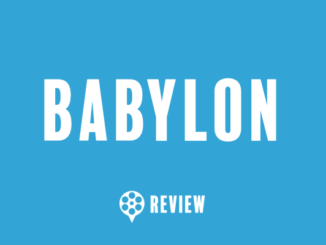The Godfather and The Godfather Part II are widely considered two of the greatest films ever made. Both films won Best Picture at the Academy Awards and offered up a masterclass in acting and directing. Long forgotten and dismissed was director Francis Ford Coppola’s third entry in the trilogy, The Godfather Part III, a film that, while not on its predecessors’ level, is an excellent film that culminates like an old Greek tragedy.
While the film has been frowned upon over the past 30 years, I continue to be a standard flag carrying fan of the film, Al Pacino and Andy Garcia’s performances, and its overall conclusion. The biggest sin The Godfather Part III made was that it was not like the trilogy’s first two entries.
As the film celebrates its 30th anniversary this month, Francis Ford Coppola has gone back into the editing room in the spirit of his Apocalypse Now: Redux to recut and morph The Godfather Part III into his complete final vision, The Godfather Coda: The Death of Michael Corleone. The title of this rerelease was always the intended title Coppola and Mario Puzo wanted for this film. In line with Apocalypse Now: Redux, The Godfather Coda feels more like an epilogue to the Corleone family story than the third entry in a trilogy.
While Coppola has gone and reworked the film if you’ve seen The Godfather Part III, you’ve essentially seen The Godfather Coda, so the opinion of those who were not fans of the film in its original form in 1990 are unlikely to have a change of heart. Coppola creates a more concise movie that adjusts the original film’s pacing, including repurposing a scene from the 45-50 minute mark of the original entry as a brand new opening that falls in line with the makings of 1 & 2.
Despite the work by Coppola, the negative aspects of the film are hard to remove, mainly because they revolve around the casting choice of Sofia Coppola as Michael’s daughter, Mary. While Coppola has gone on to become an Academy Award-winning filmmaker, her work in Godfather III was the weakest aspect of the film in 1990 and it remained in Coda. Despite the poor performance, I’ve always had the mindset that Sofia was put in a tough spot as she was never intended to take on the role as Winona Ryder was initially cast. It’s hard not to imagine how the film would have looked if we got the Ryder version in The Godfather Part III.
Another aspect of the film that can’t be fixed is the lack of Tom Hagen. Academy Award winner Robert Duvall wanted more money to return and was not given that requested amount, resulting in George Hamilton taking over the role of the family attorney. Unfortunately, it just isn’t the same as Hamilton and Pacino lack chemistry, and Coda does little to fix that.
The biggest issue outside of those aforementioned performances is the cringe-inducing romance that develops between first cousins, Mary and Vincent. While Coppola has trimmed some of the romance in this version, it wasn’t enough to take away from the fact that the illicit relationship between the two is an integral part of the overall plot that could not just wholly be removed. However, credit goes to Coppola for realizing the mistakes he made with this in 1990.
Despite those three issues engraved in the film’s DNA that just could not be wholly fixed, The Godfather Coda shows off the brilliance of Coppola’s direction. The parallel between the opera at the climax of the film and afterward is an absolute masterclass in directing. The movie’s set-pieces, including the Atlantic City Massacre and the murder of Joey Zasa, are top-notch and some of the best set pieces in the trilogy.
As Joey Zasa, Joe Mantegna is one of the most underrated characters and performances in the entire trilogy. On full display in Coda, Zasa channels his inner John Gotti to give cinephiles a confident, arrogant portrayal of a young mobster taking over the old guard.
Aiding Zasa’s outstanding performance are the two standouts of the film, Andy Garcia and, of course, Al Pacino. Garcia blends every member of the Corleone family as he transforms into Vincent Corleone, Sonny’s son.
Pacino is undeniable in this film as he offers up a heartbreaking turn as Michael. Michael is a beaten man who’s in full regret of all the choices he’s made throughout his life. You can feel the tiredness radiating off of Pacino as all he wants to do is put the past behind him.
Still, as Michael is well aware, “Just when I thought I was out, they pull me back in.” That’s what Francis Ford Coppola has accomplished with The Godfather Coda: The Death of Michael Corleone, he’s pulled us all back in.





